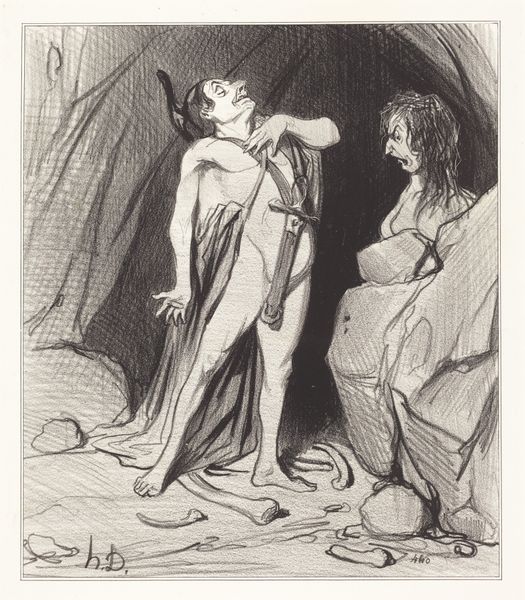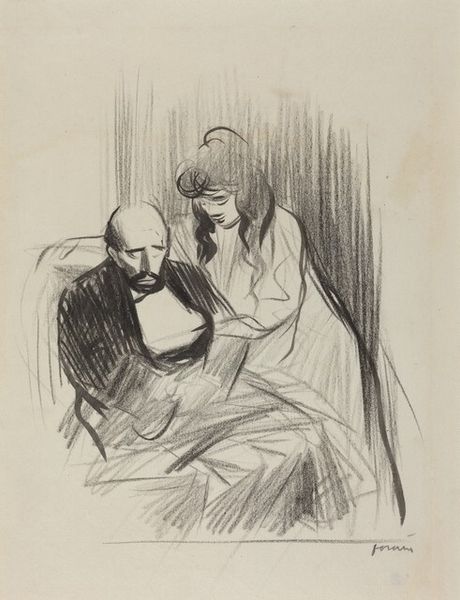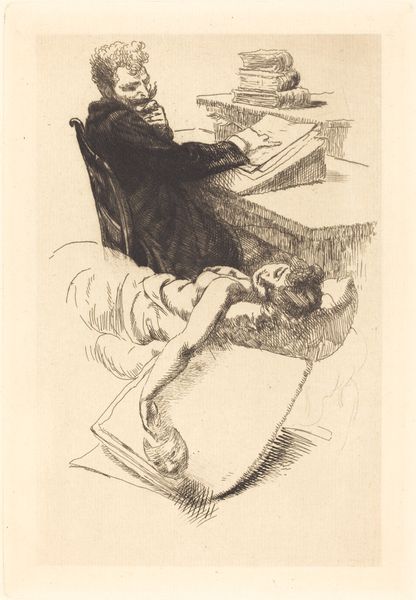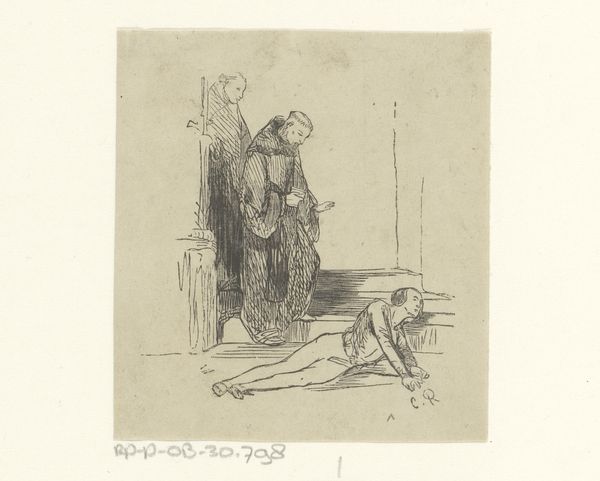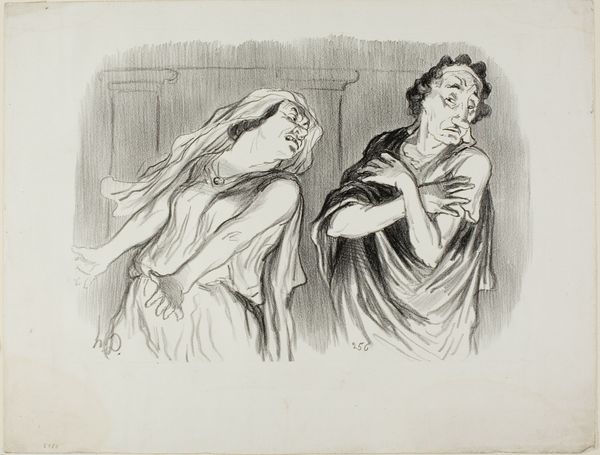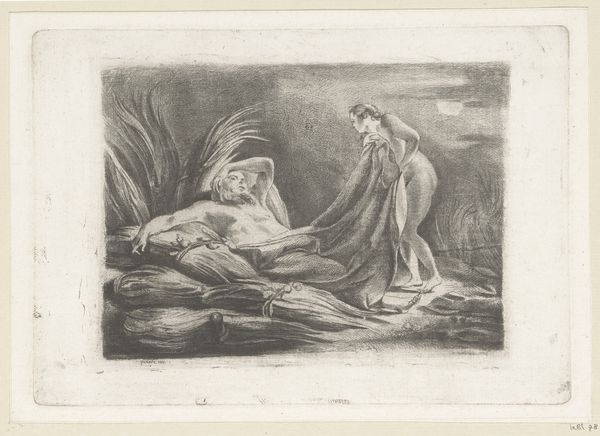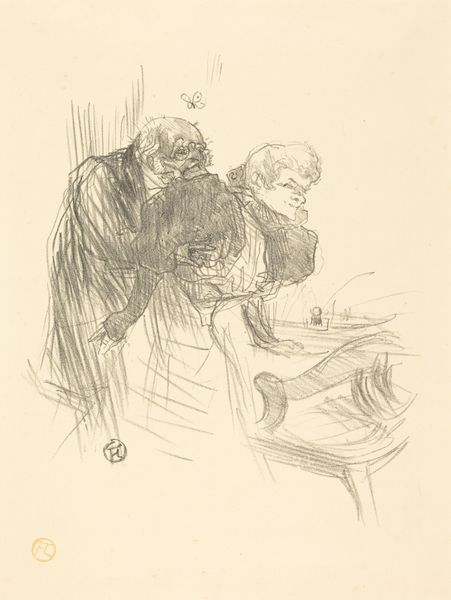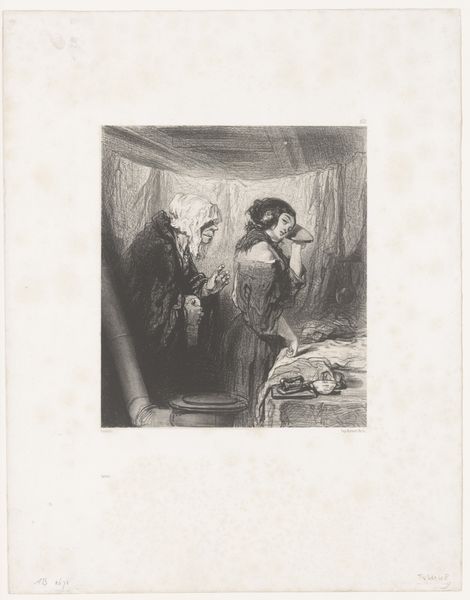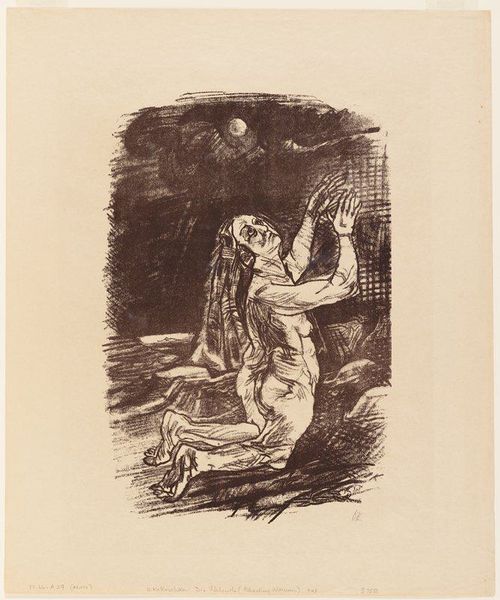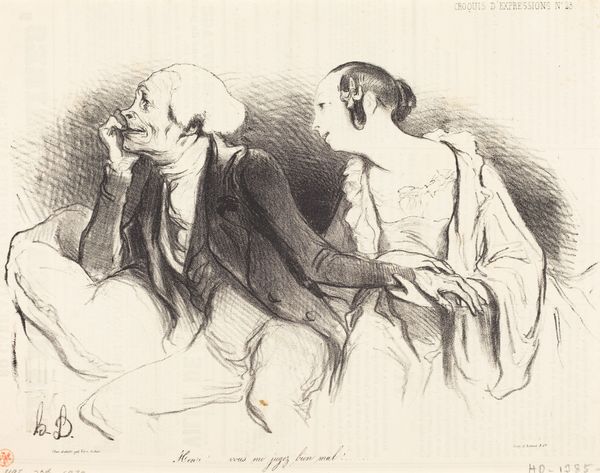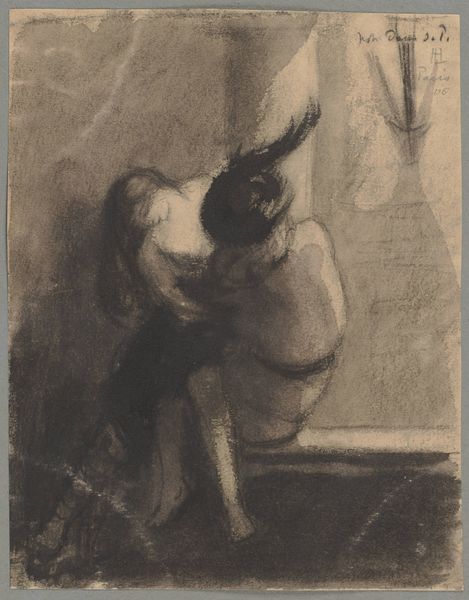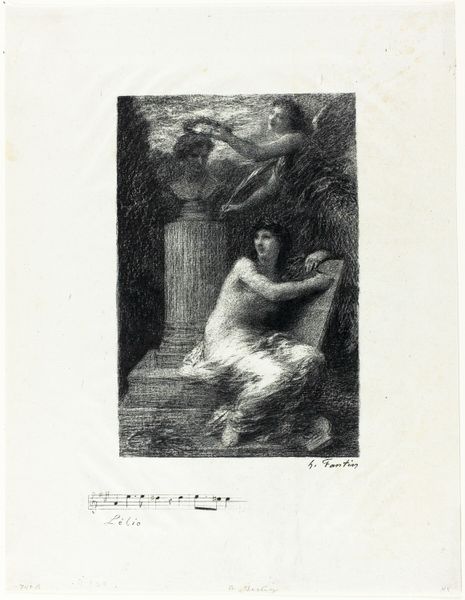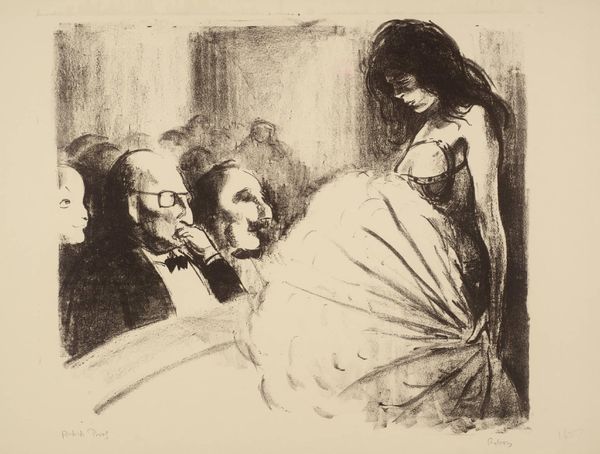
Copyright: National Gallery of Art: CC0 1.0
Curator: What strikes me first about this drawing is the palpable tension between the figures, despite their physical proximity. Editor: Yes, there’s a clear emotional narrative unfolding. This is "Scene in a Private Room (vertical plate)," a print made circa 1905 by Jean-Louis Forain. Forain was very much a chronicler of Parisian life, particularly the underbelly of society, the cafes, the theaters, the brothels… the private dramas. Curator: It is a scene of unease rendered in pencil on paper. We see a woman with her face hidden, her hand pressed to her forehead as if in despair, while a man with a rather imposing moustache reclines beside her. His eyes are closed. Editor: Note how Forain uses the medium – a quickly rendered sketch, really – to convey a raw, almost journalistic, immediacy. The fleeting, sketched lines lend themselves to a candid glimpse into what we may understand to be an interpersonal conflict. Curator: It's important to understand the historical context. The print depicts the complex relationship between a demimonde woman and a man of the bourgeoisie, likely a patron. It hints at a power imbalance deeply embedded within Parisian society at the time. The woman is trapped, perhaps financially dependent. Editor: Absolutely. It brings to the fore the complexities of gender and class. She hides her face, literally obscuring her identity, which seems so telling about her lack of agency. Is it shame? Exhaustion? We are denied access to her face and by extension to her interior life. He, by contrast, seems indifferent. Curator: And we must also think about how Forain chooses to portray them, too, placing the woman in a vulnerable, almost self-effacing pose next to the reclining man who seems to be unmoved by whatever turmoil she is in. It definitely critiques bourgeois masculinity and the exploitation of women during this era. Editor: The title itself, “Scene in a Private Room,” speaks volumes. It's a deliberate act of exposure, of making the private public and demanding that we confront these difficult truths about Parisian society. Curator: The print clearly acts as a mirror to society, unflinchingly capturing some realities that some may not wish to see. Editor: It makes me think about whose stories are told and who gets to tell them. The history of this period is written so often by men, but this drawing offers an opportunity to explore the silent narratives, the female experience in a world shaped by patriarchal structures. Curator: I am interested in the broader history of representations of women during that time in art and the gaze of the artists on their models. Editor: Absolutely. "Scene in a Private Room" certainly gives us ample food for thought regarding art's relationship to power, gender, and societal norms.
Comments
No comments
Be the first to comment and join the conversation on the ultimate creative platform.
